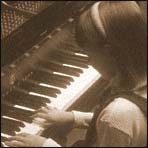
科目: 來源:不詳 題型:閱讀理解
| A.$50 | B.$100 | C.$150 | D.$200 |
| A.travel around the world | B.communicate well with others |
| C.Meet many famous people | D.get good marks in exams |
| A.suffered from the hurricanes |
| B.were willing to make pen pals |
| C.were good at writing letters |
| D.wanted to help hurricane survivors |
查看答案和解析>>
科目: 來源:不詳 題型:閱讀理解
| 1.How many times did you brush your teeth yesterday? ·Finding:A full 33% of seniors brush their teeth only once a day. ·Step:Remove the 300 types of bacteria in your mouth each morning with a battery-operated toothbrush. Brush gently for 2 minutes, at least twice a day. 2.How many times did you wash your hands or bathe yesterday? ·Finding:Seniors, on average, bathe fewer than 3 days a week. And nearly 30% wash their hands only 4 times a day—half of the number doctors recommend. ·Step:We touch our faces around 3,000 times a day—often inviting germs(病菌)to enter our mouth, nose, and eyes. Use toilet paper to avoid touching the door handle. And, most important, wash your hands often with hot running water and soap for 20 seconds. 3.How often do you think about fighting germs? ·Finding:Seniors are not fighting germs as well as they should. ·Step:Be aware of germs. Do you know it is not your toilet but your kitchen sponge(海綿)that can carry more germs than anything else? To kill these germs, keep your sponge in the microwave for 10 seconds. |
| A.Most of them have good habits. |
| B.Nearly 30% of them bathe three days a week. |
| C.All of them are fighting germs better than expected. |
| D.About one third of them brush their teeth only once a day. |
| A.twice a day | B.three times a day |
| C.four times a day | D.eight times a day |
| A.We should keep from touching our faces. |
| B.There are less than 300 types of bacteria in the mouth. |
| C.A kitchen sponge can carry more germs than a toilet. |
| D.We should wash our hands before touching a door handle. |
查看答案和解析>>
科目: 來源:不詳 題型:閱讀理解

查看答案和解析>>
科目: 來源:不詳 題型:閱讀理解


查看答案和解析>>
科目: 來源:不詳 題型:閱讀理解
 Without enough blood, the brain lives for only three to five minutes
Without enough blood, the brain lives for only three to five minutes More often the doctors can’t fix the damage
More often the doctors can’t fix the damage Sometimes they are afraid to try something to help because it is dangerous to work on the brain
Sometimes they are afraid to try something to help because it is dangerous to work on the brain The doctors might make the person worse if he operates on the brain
The doctors might make the person worse if he operates on the brain
 He thinks doctors should make the brain very cold. If it is very cold, the brain can live without blood for 30 minutes. This gives the doctor a longer time to do something for the brain.
He thinks doctors should make the brain very cold. If it is very cold, the brain can live without blood for 30 minutes. This gives the doctor a longer time to do something for the brain. 
查看答案和解析>>
科目: 來源:不詳 題型:閱讀理解



查看答案和解析>>
科目: 來源:不詳 題型:閱讀理解
查看答案和解析>>
科目: 來源:不詳 題型:閱讀理解
查看答案和解析>>
科目: 來源:不詳 題型:閱讀理解
查看答案和解析>>
科目: 來源:不詳 題型:閱讀理解
查看答案和解析>>
百度致信 - 練習(xí)冊(cè)列表 - 試題列表
湖北省互聯(lián)網(wǎng)違法和不良信息舉報(bào)平臺(tái) | 網(wǎng)上有害信息舉報(bào)專區(qū) | 電信詐騙舉報(bào)專區(qū) | 涉歷史虛無主義有害信息舉報(bào)專區(qū) | 涉企侵權(quán)舉報(bào)專區(qū)
違法和不良信息舉報(bào)電話:027-86699610 舉報(bào)郵箱:58377363@163.com